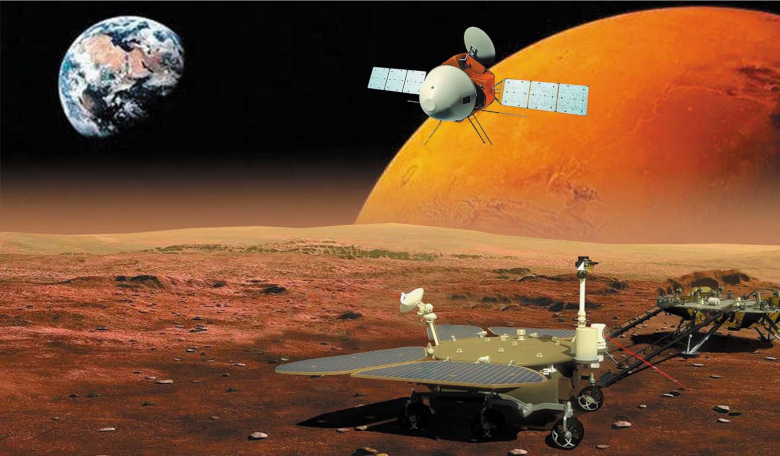Slated for launch tomorrow (23 July), China has rolled out its heaviest rocket to its Wenchang Satellite Launch Center on Hainan Island ready to liftoff with Tianwen-1, the country’s first Mars landing mission.
Although Chinese officials have not officially publicised the launch date, public notices have been issued warning ships to avoid downrange drop zones along the launcher’s flight path between 12:00 am and 3:00 am EDT (04:00 - 07:00 GMT) Thursday 23 July, 2020.
Tianwen-1, which means "questions to heaven" and was taken from the title of a poem by Qu Yuan (340-278 BCE), aims to send an orbiter and a lander/rover combo to the Red Planet.
The second of three spacecraft heading to the Red Planet this month, Tianwen-1 will be hot on the heels of the UAE’s Hope probe which launched earlier this week.
The two are destined to reach Mars in February 2021, where they will also be joined by NASA’s Perseverance rover after it lifts off next week.
The Tianwen-1 probe has a combined mass (including fuel) of about 5 tonnes and once at the Red Planet, the orbiter will provide a relay communication link to the rover, whilst also performing its own scientific observations for one Martian year.
The ~240 kilogram, solar-powered rover on the other hand, is expected to be in operation for about 90 Martian days, or sols, once it descends to the planet’s surface some 2–3 months after the arrival of the spacecraft.
The rover is nearly twice the mass of China's Yutu-2 rover, which is currently ambling over lunar terrain on the far side of the moon.
According to a new paper published in Nature Astronomy just days ahead of the mission's speculated launch, the rover will likely attempt to land at Utopia Planitia; a huge basin located in northeastern Mars that was formed by a large impact early in Mars' history.
Tianwen-1’s main task is, “to perform a global and extensive survey of the entire planet,” which China hopes will be achieved with the 13 scientific payloads packed on both the orbiter and the in situ rover.
Between them, the mission scientific objectives include; mapping the morphology and geological structure of Mars, investigating the surface soil characteristics and water-ice distribution and analysing the surface material composition.
Mars’ climate, ionosphere and electromagnetic and gravitational fields that could aid in investigating the internal structure of the planet will also be studied.
“Mars offers a substantial and pragmatic opportunity to answer key questions concerning the existence of extraterrestrial life, and the origin and evolution of the Solar System,” write the Chinese Academy of Sciences researchers in their short paper.
Aside from advancing our knowledge of Mars to an unprecedented level, the authors also note that their research could aid in helping humanity become a multi-planet species by exploring “the possibility of human habitation.”
This ambitious mission is China’s second attempt to reach the Red Planet with a robotic probe, following the unsuccessful Yinghuo 1 Mars-exploration spacecraft.
Yinghuo-1 was left stranded in Earth orbit after the Russian Phobos-Grunt sample return spacecraft it was hitching a ride with, stalled before reaching outer space in November 2011.
The probe and its Russian ride later disintegrated over the Pacific Ocean when they re-entered Earth’s atmosphere on 15 January, 2012.
Despite this setback, China has found success with their lunar missions, with the next, Chang’e 5, scheduled for launch later this year.
This has prompted the Chinese national strategy to aim for Mars again, and this time it will have the rich engineering heritage gained during the country's lunar exploration programme to fall back on.
“Tianwen-1 is going to orbit, land and release a rover all on the very first try, and coordinate observations with an orbiter. No planetary missions have ever been implemented in this way,” say the authors, one of whom is Wan Weixing, chief scientist of China’s Mars exploration program who unfortunately passed away in May after a long illness.
“If successful, it would signify a major technical breakthrough,” they add.











